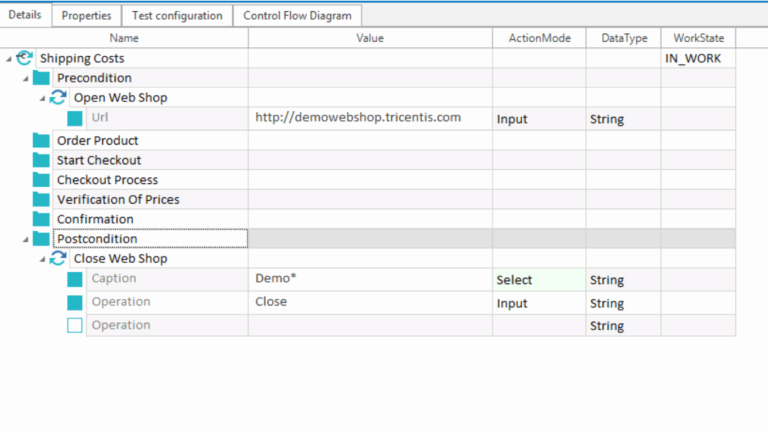Selenium for mobile testing has become increasingly viable as automated testing tools like Selenium gain immense popularity for desktop and web application testing. Selenium’s versatility, open-source framework, and extensive features make it an industry favorite.
However, with the rise in mobile device usage, the importance of testing mobile applications has surged significantly. Today, Selenium for mobile phones have become almost as essential as breathing, integral to personal, professional, and social facets of our lives. This dependency has brought mobile applications to the forefront, with each app designed to make mobile experiences smoother and more productive.
With a plethora of mobile applications available, most of which are free to download, users now rely on these apps to carry out everyday tasks from communication and entertainment to productivity and banking. Companies across industries invest substantial resources in designing and developing innovative mobile applications to meet consumer demands.
However, despite these investments, many organizations still overlook a crucial aspect of app development: funding a dedicated, high quality QA (Quality Assurance) team. This oversight can lead to significant issues down the line, as a lack of thorough testing may result in poor performance, bugs, and user dissatisfaction.
Allocating sufficient resources to QA testing for mobile applications is essential, as it ensures an app’s functionality, security, and compatibility across diverse mobile devices and operating systems. By prioritizing robust testing protocols, businesses can protect their reputation, enhance user experience, and ultimately secure long term success in a highly competitive mobile market.
There is a lot of rivalry in the market when there are so many and are used so frequently by mobile users. It also implies that quality will be crucial to an app’s success.
Testing mobile applications will therefore be essential in this situation. Automated mobile testing will also become essential for well known applications. Using an automated tool is necessary for mobile testing. We are aware that Selenium is frequently utilized to automate web applications. So, is Selenium compatible with automated mobile testing as well?
You cannot directly utilize Selenium for automated mobile application testing, hence the answer is “No.” You do, however, have Selenium supported frameworks for automating mobile application testing.
Frameworks for mobile test automation that Selenium supports include:
1. Selendroid
2. Appium
Selendroid
This is used for Selenium for mobile testing of Android applications and is also referred to as Selenium for Android. It supports previous Android versions and makes use of the JSON Wire protocol. However, Selenium for mobile testing may also be applied to iOS mobile applications by using an iOS driver.
As a beginner Selenium tester, there are good Online Selenium certification courses that also include Selendroid as part of the syllabus.
Features of Selendroid
- It works with native and hybrid Android applications as well as mobile web applications.
- It is used in conjunction with Selenium Grid to test a mobile application simultaneously across several devices.
- It is free to use because it is open-source.
- Selendroid has a feature called “hotplugging” that allows it to detect and identify new devices that are plugged into it. Therefore, while tests are ongoing, we can remove existing devices and add new ones.
- With the use of a built-in inspector, it can look at the UI elements.
- It supports Java, C#, Python, and other programming languages that Selenium WebDriver is compatible with.
- It offers an Android Driver Webview App that is built-in to test mobile web applications.
- It supports the Advanced User Interactions API for testing mobile device gestures, such as single and double taps, down and up swipes, etc.
- Selendroid may be used for automated testing on both real mobile devices and emulators.
- It supports “Dynamic Extendability,” which allows for the addition, editing, and modification of test scripts while the tests are running.
Components of Selendroid
Selendroid Server: it Runs on the mobile device(real or emulator) where the application under test(AUT) is running.
Web Driver Client: it is a Java client library, which is installed on the computer where test scripts will be written.
Selendroid-Standalone: It is used to install AUT and Selendroid Server.
Android Driver Webview App: It is a built-in driver to test the mobile web.
Appium
Because it supports Android, iOS, and Windows desktop applications, it is a more widely used option for mobile automation testing. For testing older Android application versions, Appium has a Selendroid mode built in. Like Selendroid, it makes use of the JSON Wire Protocol.
Features of Appium
- The client-server architecture is used by Appium.
- It has a Node.js-written HTTP server that facilitates communication between clients and mobile devices. The mobile device receives commands from the clients, which include Ruby, PHP, C#, and Python libraries.
- it offers automatic testing for Android and iOS (Hybrid, Native, and Web applications). It can also be used to evaluate Windows desktop programs.
- It is used for cross-platform testing because it is compatible with iOS, Windows, and Android.
- It is also free to use because it is open-source.
- Using the same API, the same test scripts may be used for iOS, Windows, and Android. As a result, it permits code reuse.
- Because Appium is more well known, it has a sizable and vibrant user base.
- For Appium testing, you don’t need to reinstall the program if there is only a tiny amount of code changed. The application’s source code is not accessible for this reason. When any little modifications are made to the application being tested, other automation tools like Robotium and Selendroid demand a reinstallation or rebuild (AUT).
- Parallel testing of test scripts across several devices is also supported by Appium.
Components of Appium
Appium server: The Appium server, built with Node.js, is designed to receive and process connection and command requests from clients formatted in JSON. Acting as the intermediary between the client and the mobile device, the server translates these JSON requests into executable commands for the device. Upon receiving a request, the Appium server establishes a session a temporary, isolated environment through which it communicates with the mobile device where the application under test is installed.
This session-based communication allows the Appium server to maintain control and manage the execution of commands, ensuring each test command accurately interacts with the mobile app. By creating dedicated sessions, the server enables seamless and organized testing across multiple devices, handling commands individually to execute test scripts in a structured and reliable manner.
Appium client: The Appium client is essentially the framework through which automation test scripts are written in languages like Java, C#, Ruby, Python, and JavaScript. These scripts, acting as clients, communicate with the Appium server to execute commands on mobile applications.
This flexibility allows testers to write and control scripts in their preferred language, making it easier to implement tests for Android and iOS platforms. By supporting various languages, the Appium client provides a versatile interface for managing test commands, ensuring smooth automation across different mobile environments.
End device: Mobile devices, whether real physical devices or virtual emulators, serve as the end targets for executing automated test scripts in Appium. These devices host the application under test, and all automated commands sent from the client via the Appium server are executed directly on them. Emulators offer a cost effective and scalable way to simulate real devices, making it easier to test across different operating system versions and configurations.
On the other hand, real devices provide accurate, real world conditions, capturing issues that might not appear on emulators. By supporting both options, Appium allows testers to choose the most suitable device environment based on project needs, enabling thorough and versatile testing across a wide range of scenarios.
Conclusion
In the realm of mobile testing, Appium and Selendroid have emerged as leading tools, each offering unique advantages suited to different testing requirements. Both tools are open-source and support a range of automation testing needs for mobile applications, but they excel in specific contexts based on the project’s demands and the application’s target platform.
Appium is a highly flexible and robust tool widely regarded for automating functional, regression, compatibility, and integration testing of both Android and iOS applications. One of Appium’s greatest strengths lies in its cross-platform capability; it allows testers to write a single script that can run on both Android and iOS platforms, significantly reducing the effort required for dual platform testing. Additionally, Appium supports multiple programming languages, such as Java, Python, Ruby, and JavaScript, giving testers the freedom to choose their preferred language for writing test scripts.
Given its broad range of capabilities and adaptability, Appium has become the preferred choice for projects that require comprehensive automation testing across both major mobile operating systems.
Additionally, Appium might be preferable if you need stronger community support. Before you can learn Appium and Selendroid, you need to understand how Selenium works. You can begin your journey by enrolling for Online Selenium training programs.
Call to Action
Absolutely! Selenium can be adapted for mobile testing, especially when combined with tools like Appium that extend its capabilities to mobile environments. By leveraging Selenium’s powerful framework along with mobile testing tools, you can ensure comprehensive coverage across web, desktop, and mobile applications.
Ready to master mobile testing with the right tools? Join H2K Infosys today for in-depth training in Selenium, Appium, and mobile test automation. Empower your skills and advance your career with our expert led courses designed to prepare you for the demands of real world testing. Enroll now and take the next step towards becoming a proficient mobile test automation engineer!





























